The History of Tempura and How to Make Them
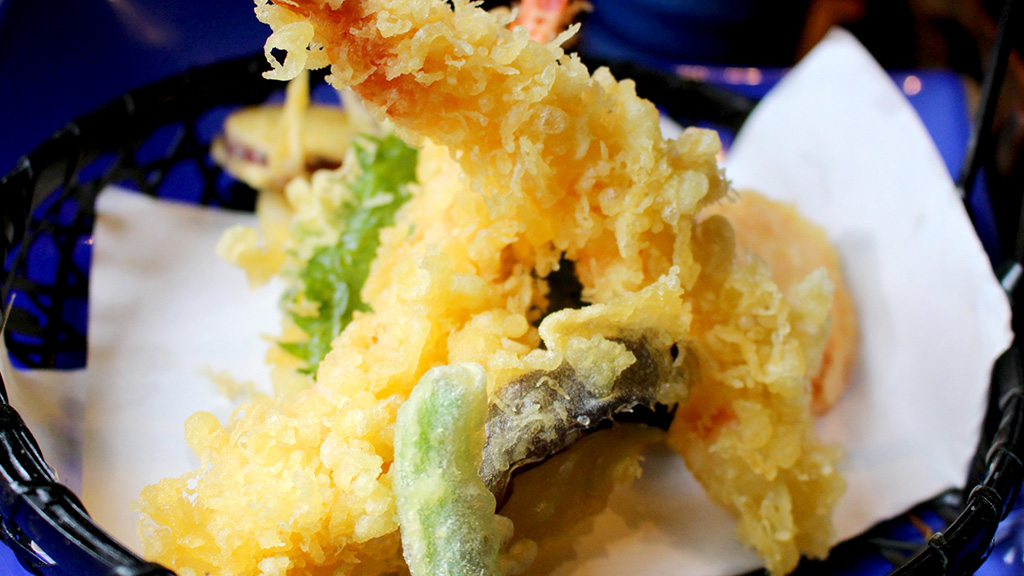
This post is also available in 日本語
Tempura is a classic Japanese food dish. You can eat tempura at a variety of establishments, such as high-class restaurants, tempura specialty restaurants, and udon or soba noodle eateries, but you can also make tempura at home. On this occasion, I would like to introduce you to tempura.
Contents
What is tempura?
This is a dish in which a coating, in which soft flour and eggs are dissolved in water, is added to seasonal vegetables, wild plants or seafood, and fried in oil. There are many theories about its origin, but it is said to be a method of cooking that came from Portugal during the Muromachi era.
It is similar to a fritter, but the texture and coating are different. With the fritter, soft flour, egg yolks, and milk are mixed together well to make it sticky, before whipped egg whites are added. However, with tempura, the coating is mixed lightly so it is less sticky.
How to make tempura
Prepare the ingredients
After doing the preparation work, and removing the moisture, lightly sprinkle on the soft flour.
- Shrimp
Peel off the shell, leaving the tail, but removing the vein. Break off the tip of the tail and remove the moisture. If you make a cut in the stomach and stretch it with your finger, it will come out straight, even when fried. - Eggplant: Cut in half and make a notch in it.
- “Shishitogarashi” sweet green pepper: Make holes using a toothpick so it does not rupture
- Pumpkin/sweet potato: Thinly slice
- Shiitake mushrooms: Cut off the stem, and “Kazarigiri (cut decoratively)”.
Add the coating and fry.
- Mix the egg and water and add the sieved flour.
- Coat the main ingredients and fry in oil at 170°C until thoroughly cooked.
Arranged recipe: “Kaki-age” (Mixed vegetable and seafood tempura)
Taking finely chopped ingredients, and coating and frying them together is referred to as “Kaki-age”. It tends to crumble less if you place it on a cooking sheet when you fry it.
- Thoroughly drain the moisture from the main ingredients.
- Sprinkle soft flour all over the ingredients, add the coating and mix together.
- Place on a cooking sheet cut to a size of 10cm.
- While still on the cooking sheet, fry in oil of 170°C.
After the coating hardens, remove the cooking sheet and fry for another minute. - Flip over, and remove after frying for 2 minutes more.
Arrangement recipe: “Isobe-age”
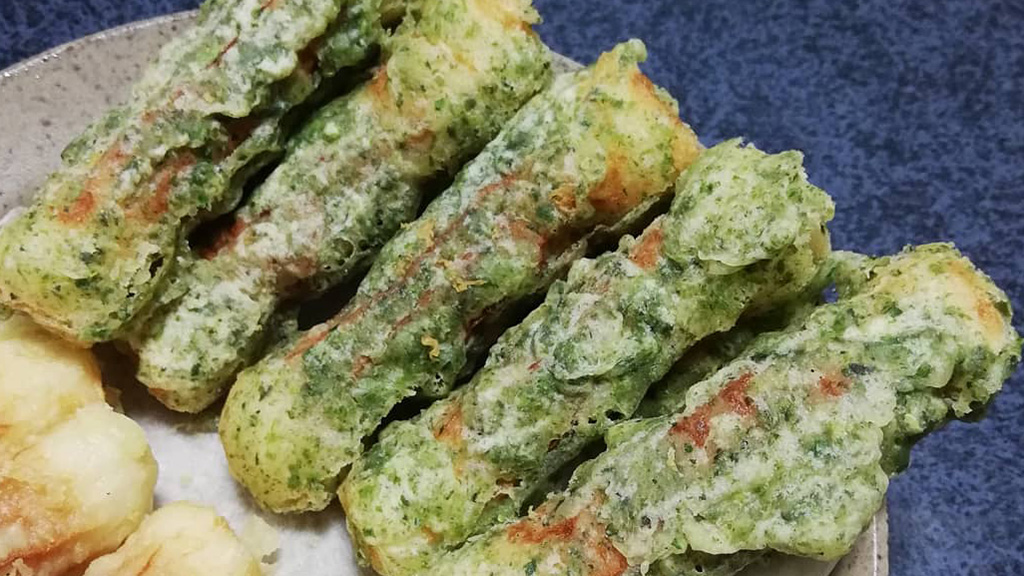
“Isobe-age” refers to mixing “Nori” seaweed and attaching to ingredients and frying, or wrapping the ingredients in seaweed and frying. Particularly popular is “Chikuwa Isobe-age”.
- Cut the “Chikuwa (Tube-shaped fish paste cake)” either half vertically or half diagonally.
- Attach a coating with “Ao-nori” powdered seaweed to the “Chikuwa”, and fry until cooked through.
Secret of making tempura crispy
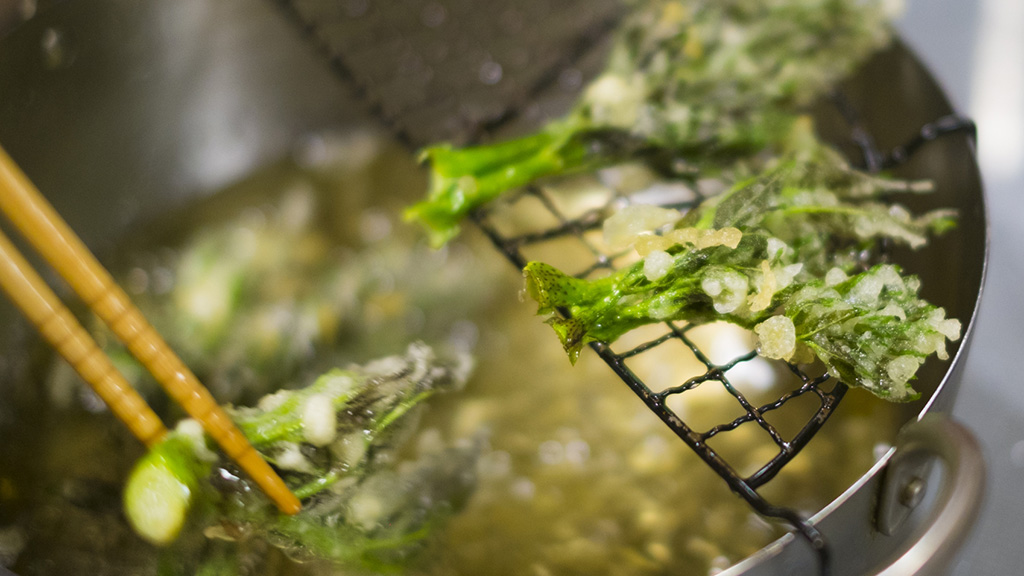
Draining the moisture
If there is moisture left in the ingredients, it will not crispy. Drain the moisture well and sprinkle soft flour on lightly before coating.
Do not allow to become sticky
If the coating becomes sticky, you will not be able to fry it crisply. Be careful not to mix the coating too much. If you cool the ingredients, they are less likely to become sticky.
Temperature of the oil
The appropriate temperature for the oil is between 160-180°C. For root vegetables like potato or lotus root, fry thoroughly at lower temperatures. In case of leafed vegetables, such as “Shiso leaf” and “Shishitogarashi”, as well, fry at lower temperatures. Other vegetables and seafood can be cooked at higher temperatures.
How to eat
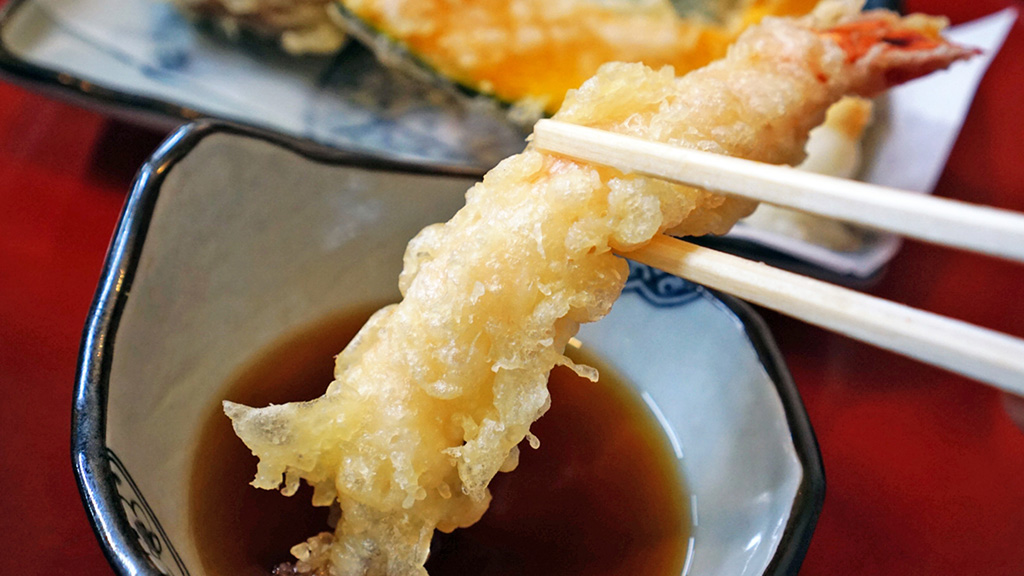
Generally, this is eaten by dipping in “Ten-tsuyu” sauce placed in a small saucer. You can also add grated radish or grated ginger.
“Ten-tsuyu” is made by adding “sake”, “mirin”, or soy sauce to stock. This can also be purchased at supermarkets, or “Men-tsuyu” can be used in its place. Dilute “Men-tsuyu” a little with water, add a little “mirin” and heat in a microwave oven (for one minute at approximately 500W).
In place of “Ten-tsuyu”, you can add lemon juice or salt. We also recommend “Matcha salt” (salt mixed with powdered green tea) or “curry salt”.
“Tendon”/“Tenju”
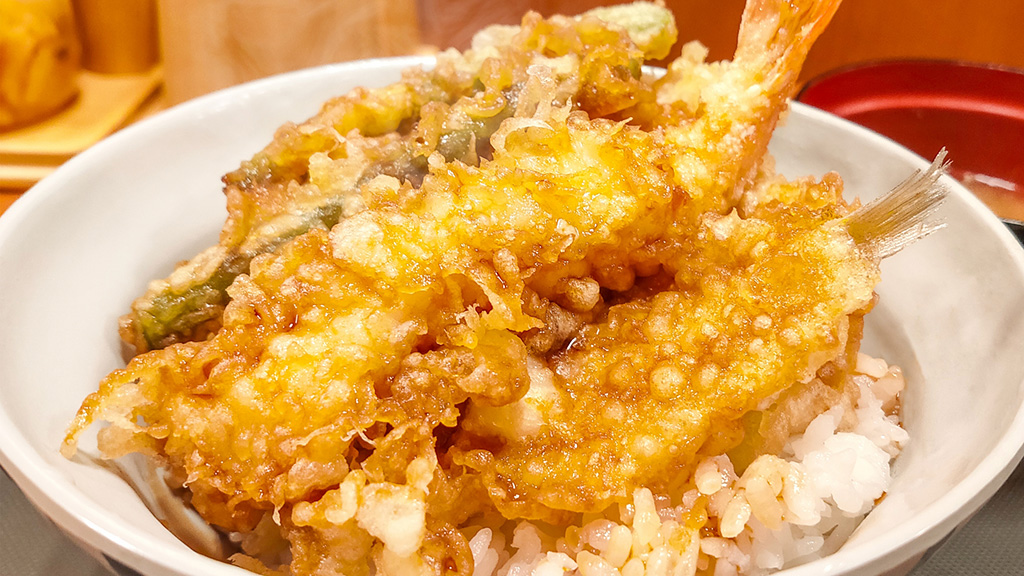
This is a dish when you place tempura on rice and pour “Ten-tsuyu” sauce on top. “Tendon” is when it is on a bowl of rice while it is called “Tenju” if it is on rice in an ornate box.
“Tempura-udon”/ “Ten-soba”
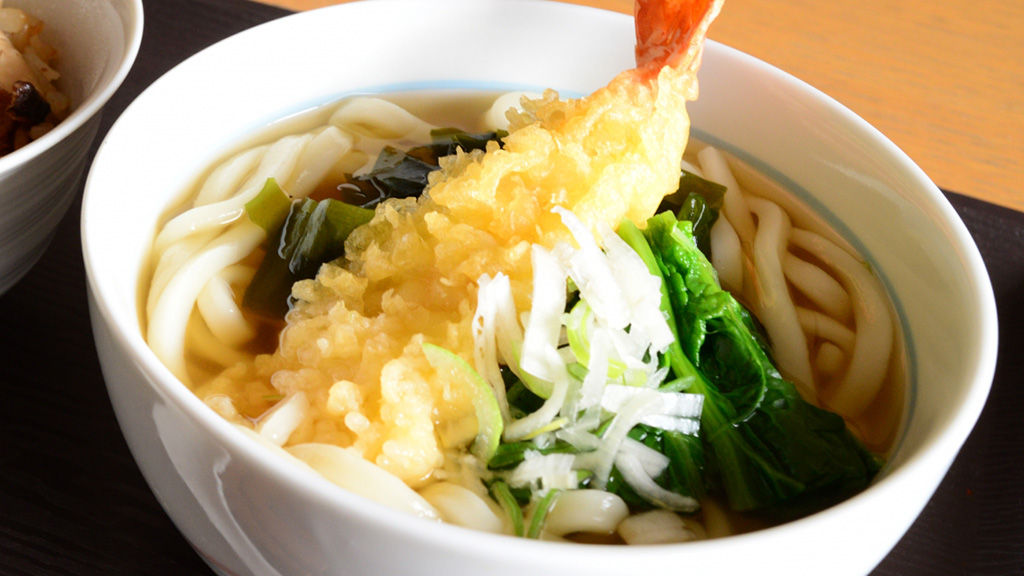
This can be placed on top of warm udon or soba, or eaten together with chilled udon or soba.
“Tenmusu”/ “Tenmaki”

“Tenmusu” is when Tenpura is used as the ingredient for an “onigiri” rice ball, and when Tempura is used as the them for a sushi roll, this is referred to as “Tenmaki”.
- What are “Wagara (traditional Japanese patterns)”? Meaning and Prayers Accompanying the Main Japanese Patterns
- Types of Sushi and Its History
- Easily Explained. What is “Furusato Nozei”?
- Katakana words, what do they mean? “Icons, remote controls, computers…”
- [2021 | Tokyo] Four Japanese language schools recommended









